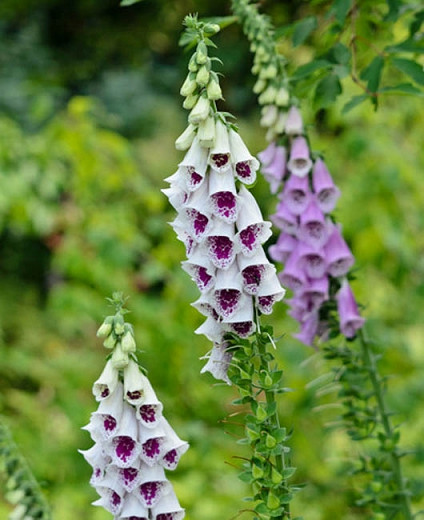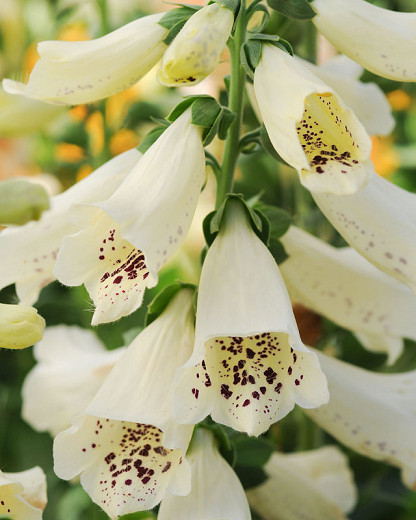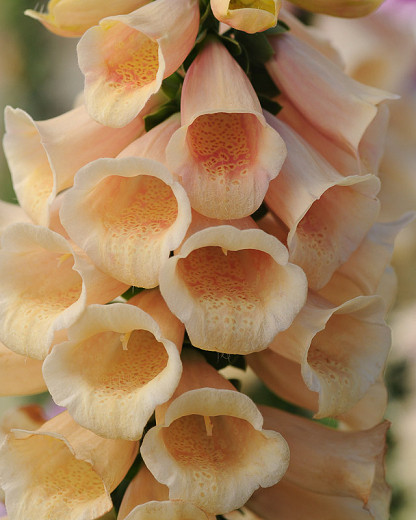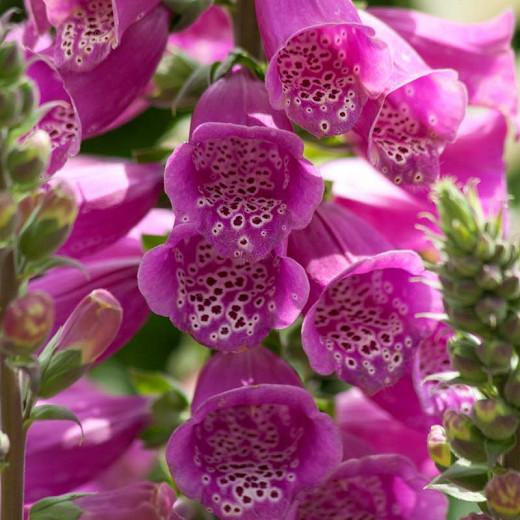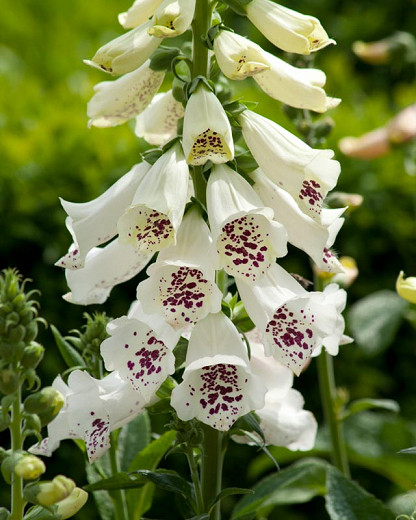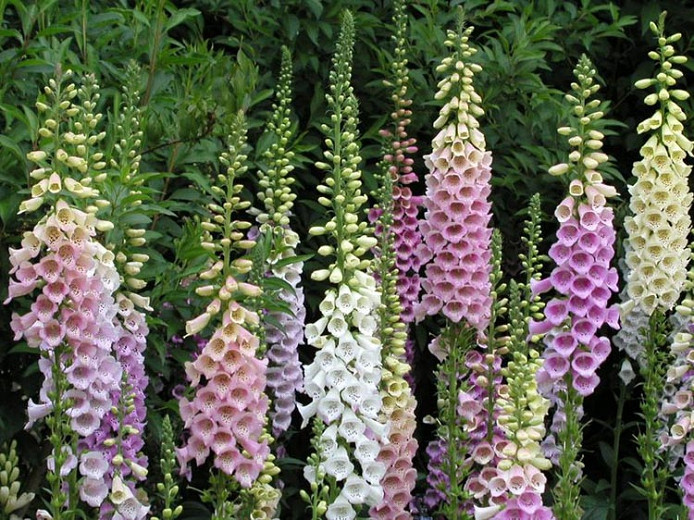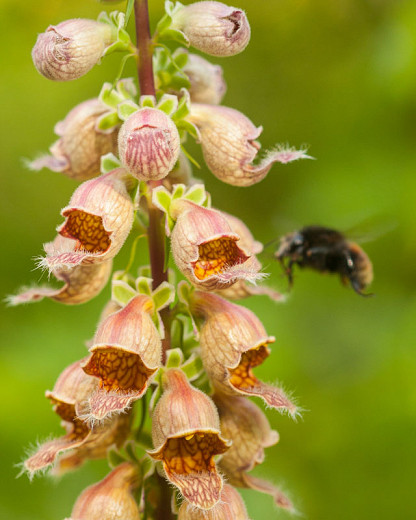Digitalis purpurea Pams Choice (Common Foxglove)
Providing architectural height to borders, Digitalis purpurea 'Pam's Choice' (Common Foxglove), is an eye-catching biennial or short-lived perennial, which forms tall spires of pendulous, funnel-shaped, pure white flowers heavily spotted with maroon purple in the throat. Blooming profusely from late spring to mid-summer, they are attractive to hummingbirds, which hover near the tubular blossoms, and to birds that flock to the seedheads in the fall. The plant forms a low rosette of coarse, hairy leaves in the first year, bursting into flower the second spring, then setting seed and usually dying. Offering a long-lasting floral display, this eye-catching plant naturalizes well, as it self-sows freely, and creates lovely colonies in the landscape.
- Grows vigorously up to 3-4 ft. high (90-120 cm) and spreads 12-24 in. (30-60 cm).
- Performs best in full sun to part shade, in average, medium moisture, well-drained soils. Prefers humus-rich soil in partial shade but will grow in full sun. Deer and rabbit resistant.
- Easy to grow, Foxglove is a welcomed addition to beds and borders, city gardens, cottage gardens, coastal gardens, or naturalized areas. Perfect foil in front of shrubs or dark backgrounds. For best visual impact, plant Floxgloves in groups of 3 to 4 plants.
- Propagate by seed sown in situ in late spring. Alternatively, sow in seed trays in late spring and plant out to the final position in late summer.
- Cut back after flowering. Self-seeds freely under optimum growing conditions. Deadhead after flowering to avoid problems with excess numbers of seedlings.
- Keep an eye out for aphids, leaf and bud eelworms, leaf spots, and powdery mildew.
- Highly toxic by ingestion. Wear gloves and wash your hands after handling.
- Toxic to dogs, toxic to cats, toxic to horses, toxic to humans.
- Digitalis purpurea is native to and widespread throughout most of temperate Europe.
- Find where Digitalis purpurea species is invasive in the United States.
- Discover beautiful U.S. native plant alternatives.
Requirements
| Hardiness | 5 – 9 |
|---|---|
| Heat Zones | 1 – 9 |
| Climate Zones | 1, 1A, 1B, 2, 2A, 2B, 3, 3A, 3B, 4, 5, 6, 7, 8, 9, 10, 11, 12, 13, 14, 15, 16, 17, 18, 19, 20, 21, 22, 23, 24, A2, A3 |
| Plant Type | Perennials |
| Plant Family | Digitalis – Foxgloves |
| Exposure | Full Sun, Partial Sun |
| Season of Interest | Spring (Late)Summer (Early,Mid) |
| Height | 3' – 4' (90cm – 120cm) |
| Spread | 1' – 2' (30cm – 60cm) |
| Spacing | 18″ – 24″ (45cm – 60cm) |
| Water Needs | Average |
| Maintenance | Low |
| Soil Type | Chalk, Clay, Loam, Sand |
| Soil pH | Acid, Alkaline, Neutral |
| Soil Drainage | Moist but Well-Drained, Well-Drained |
| Characteristics | Cut Flowers, Showy, Semi-Evergreen |
| Tolerance | Deer, Rabbit |
| Attracts | Birds, Butterflies, Hummingbirds |
| Garden Uses | Beds and Borders, Wall-Side Borders |
| Garden Styles | City and Courtyard, Coastal Garden, Informal and Cottage, Prairie and Meadow |
